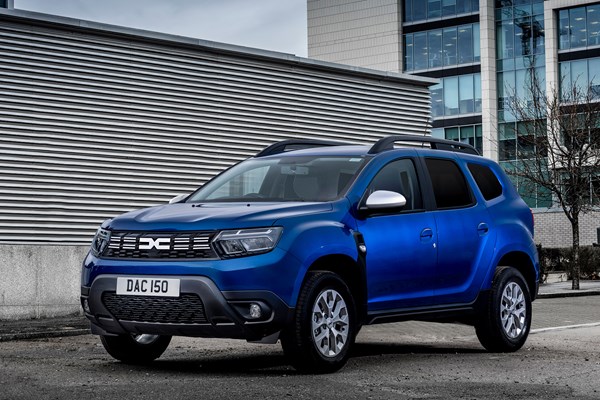Dacia Duster Commercial van review (2022)
Outstanding value for a capable off-road van
PROS
- Very cheap to buy
- Reasonable running costs
- Well-equipped for the money
- 4x4 versions very capable off road
- Quality conversion from passenger car
CONS
- Limited payload
- Raised load area
- Most models FWD
- Offset driving position
- Poor for safety kit
Summary
This second-generation Dacia Duster Commercial is a passenger SUV converted into a van. Now updated with the latest Dacia brand identity, as this review will show it majors on incredibly good value for money and is substantially cheaper than all other commercial 4x4s.
But that's partly because most models aren't four-wheel drive at all, and due to its light weight and relatively low payload, the new Duster Commercial actually qualifies as a car-derived van (CDV).
This makes little difference from a rules and regulations perspective in the real world, but the Duster is so affordable that it even out-competes the much smaller Ford Fiesta Van and Renault Zoe Van on price terms, while offering a larger load space.
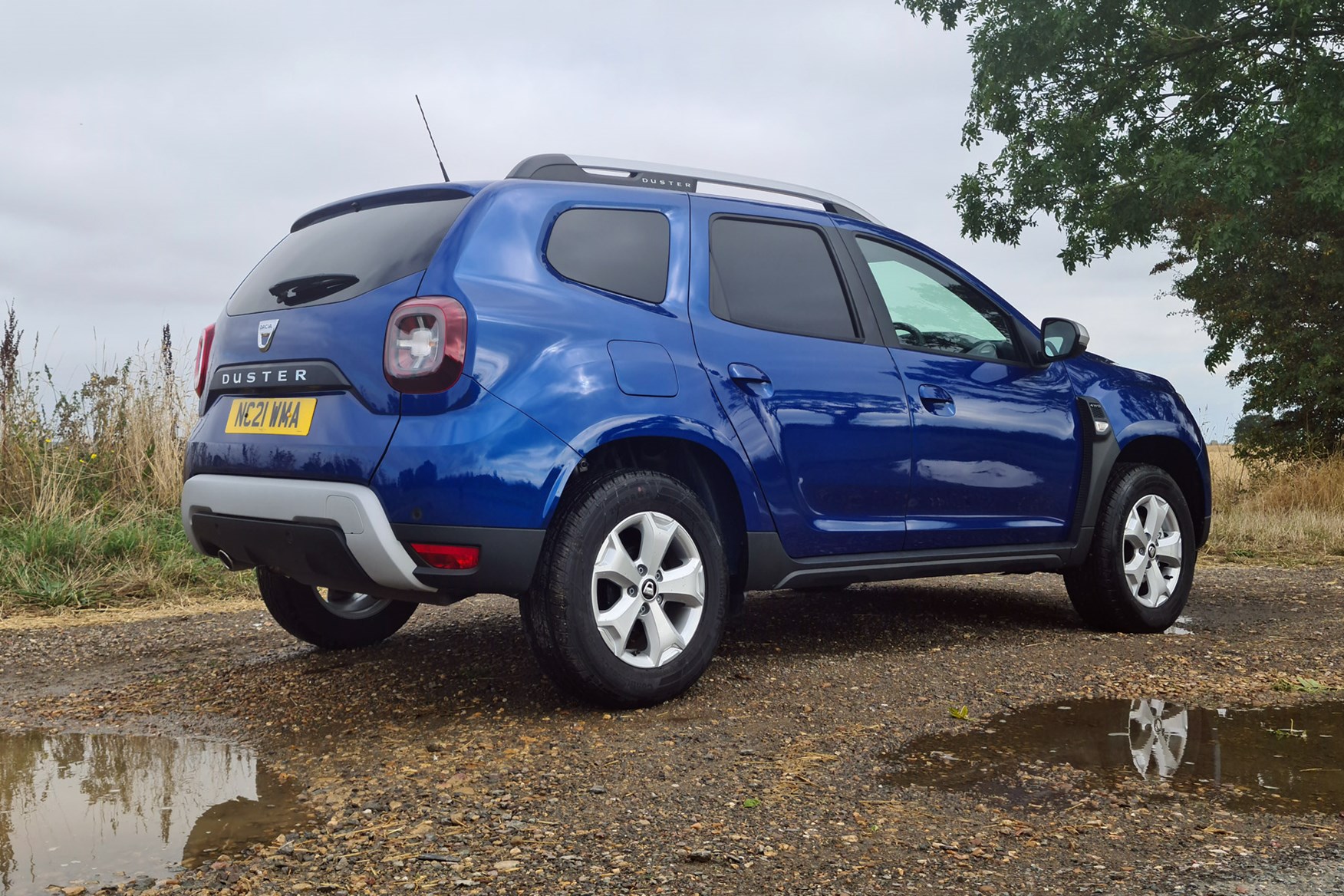
As with all commercial 4x4s and CDVs, the Dacia Duster Commercial requires some compromises compared with a conventional van. But it's also pleasant to drive, nicer to sit in and the four-wheel drive models add proper off-road capability – something a four-wheel drive van like the Vauxhall Combo Cargo 4x4 will charge you much, much more money for.
In another difference to most rivals, the Duster Commercial is available with a choice of petrol and diesel engines. It also comes in two trim levels: Essential and Comfort.
What makes the Dacia Duster into a commercial vehicle?
Like other commercial 4x4s and car-derived vans, this Dacia Duster starts life as a passenger vehicle – in this instance, the Dacia Duster SUV. It’s then converted into a van by Renault Tech (Dacia is Renault’s budget brand, and Renault Tech is Renault’s in-house van conversion centre), which involves the removal of the rear seats and blanking out the rear side windows.
In place of the seats a carpeted load platform is installed, along with a bulkhead to protect passengers in the remaining front seats from things flying around in the back. There are four load-lashing hooks, too.
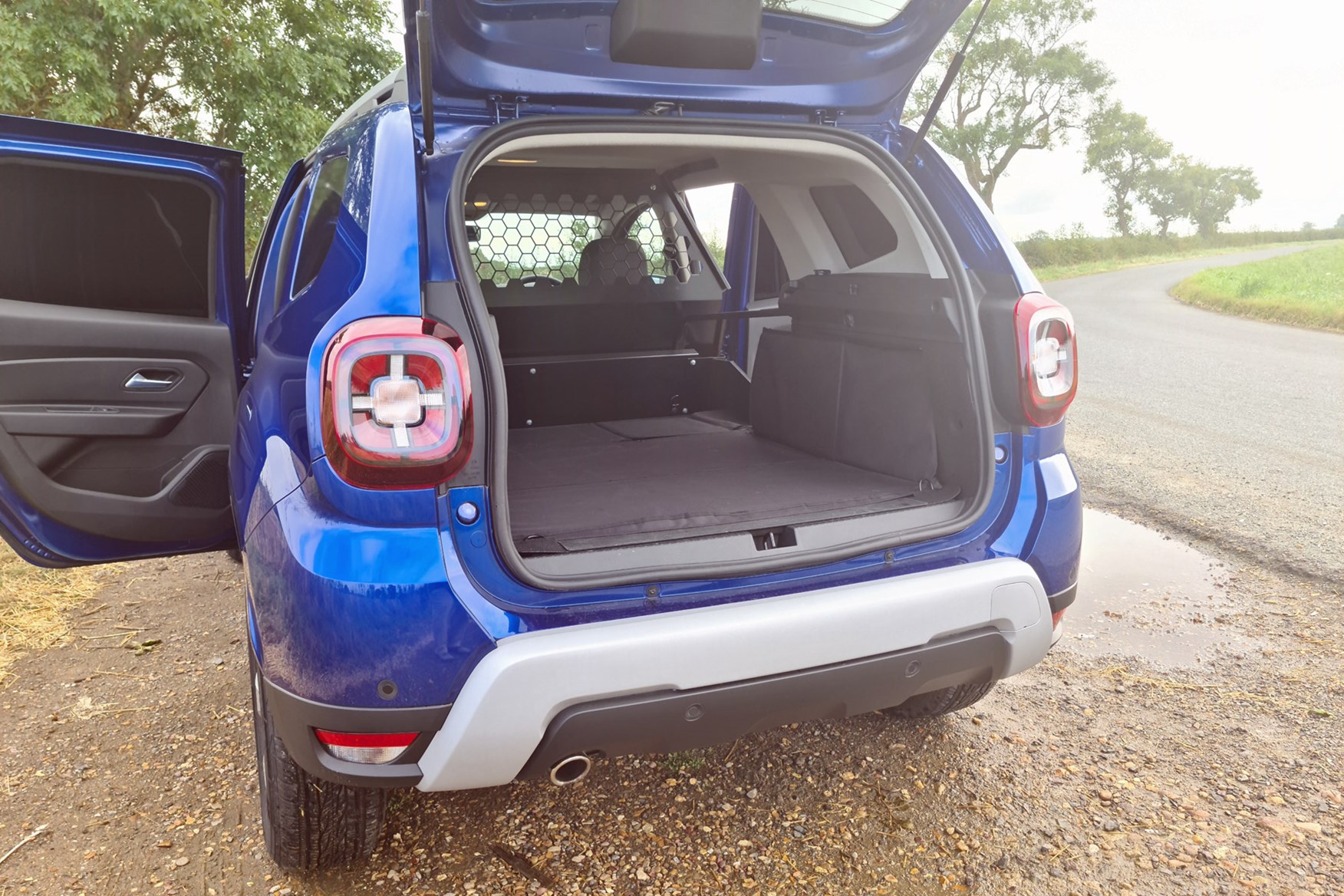
The load platform is completely flat, and raised to meet the leading edge of the rear bumper – so you’ll have to lift the load quite high but there’s no awkward lip to negotiate. Access is via the rear tailgate or the side doors, which continue to open in the same manner as the passenger version.
The existing rear parcel shelf from the passenger version remains available here, along with an extension to cover the forward part of the load area. There’s only a limited amount of room under these (337-441mm), but they will keep things away from prying eyes, and can be removed if required.
For full details of the load capacity – including payload ratings – see our dedicated Dacia Duster Commercial dimensions page.
Latest Duster Commercial facelift details and pricing
The Duster Commercial only launched into the UK market in 2021, and in October the same year Dacia had already announced a facelift. Now in August 2022, another facelift is on the way (pictured at the top of this page and below), bringing the commercial version into line with the Duster passenger car range.
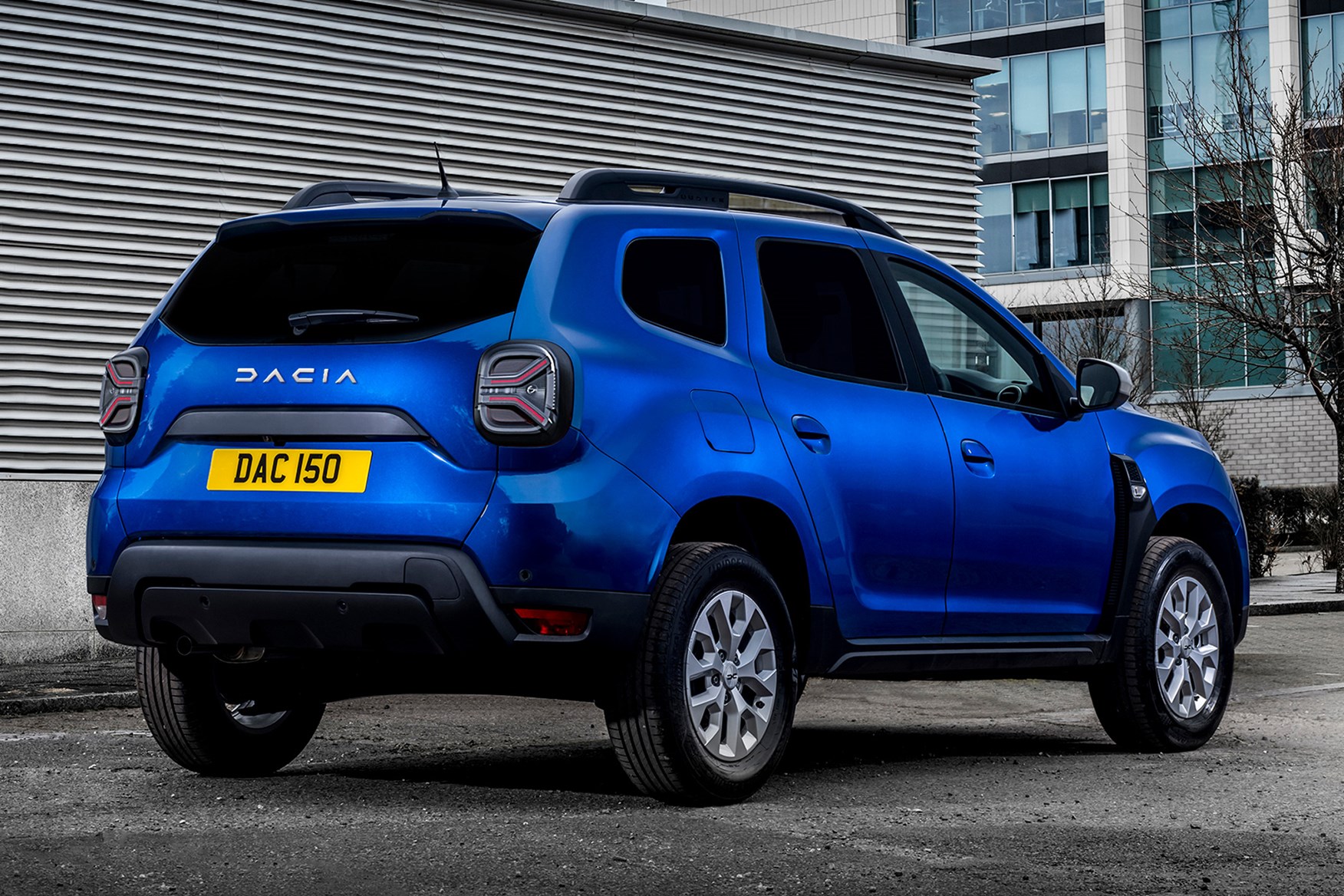
This latest change is most obvious in the new 'Dacia Link' logo, which appears on the grille, the wheels (including the steering wheel) and the rear of the Duster Commercial.
At the same time, the firm has simplified the trim levels and engine selection, with customers now able to choose between Essential and Expression models, two petrol engines and a single diesel engine. Only the diesel is available with four-wheel drive (4x4); the petrol models are limited to front-wheel drive (4x2).
Pricing has climbed somewhat from the original £11,995 ex. VAT entry point at launch. Now you'll need to spend a minimum of £13,995 plus the VAT - but that's still excellent value.
What are the rivals?
There are a number of other commercial 4x4s on the market, but with the exception of the tiny Suzuki Jimny LCV, none of them are anywhere near as cheap as the Duster.
If you have got more budget to play with, or need something for even more serious off-road work, those other alternatives include the Toyota Land Cruiser Commercial and the Land Rover Defender Hard Top, which both have exceptional four-wheel drive prowess.
Prefer something more road focused? Then check out the Land Rover Discovery Commercial.
As for car-derived vans, we’ve already mentioned the Fiesta Van and Zoe Van – the latter being 100% electric – but a closer rival to the Duster in load space terms is the Toyota Corolla Commercial Hybrid, which is based on an estate car.
Beyond these, you might also consider a pickup truck. These offer payload capacity of over 1.0 tonne and great towing ability. They all cost considerably more than the Duster Commercial to buy new, though, and won't be as comfortable to drive.
Verdict: is the Dacia Duster Commercial any good?
This review goes into much greater detail about the Duster Commercial – including what it’s like to drive, what it’s like inside, and plenty of specification and running cost info – but the quick take is that this Dacia is brilliant value.
If you need a no-nonsense van that doesn’t look like a van and offers usefully more space than in the back of a supermini then, frankly, it’s a no-brainer. You shouldn’t expect the last word in creature comforts and technology – but even in these areas the Duster Commercial does more than it probably needs to.
Skip to our full verdict on...
- Choice of petrol and diesel engines
- Only the diesel is available with four-wheel drive and multilink rear suspension
- Quiet, composed and rather good fun to drive
Dacia is unapologetically a budget brand, but we’ve found the Duster offers a far from budget driving experience
What engines are available in the Duster Commercial?
Dacia launched the Duster Commercial with two petrol engines and one diesel engine – the diesel available with selectable four-wheel drive (4x4) as well as the standard two-wheel drive (4x2), making four drivetrain variants in all.
However, when the vehicle was facelifted shortly after launch, a third, more powerful petrol model was added to the range, equipped with an EDC (Electronic Dual Clutch) automatic transmission as standard.
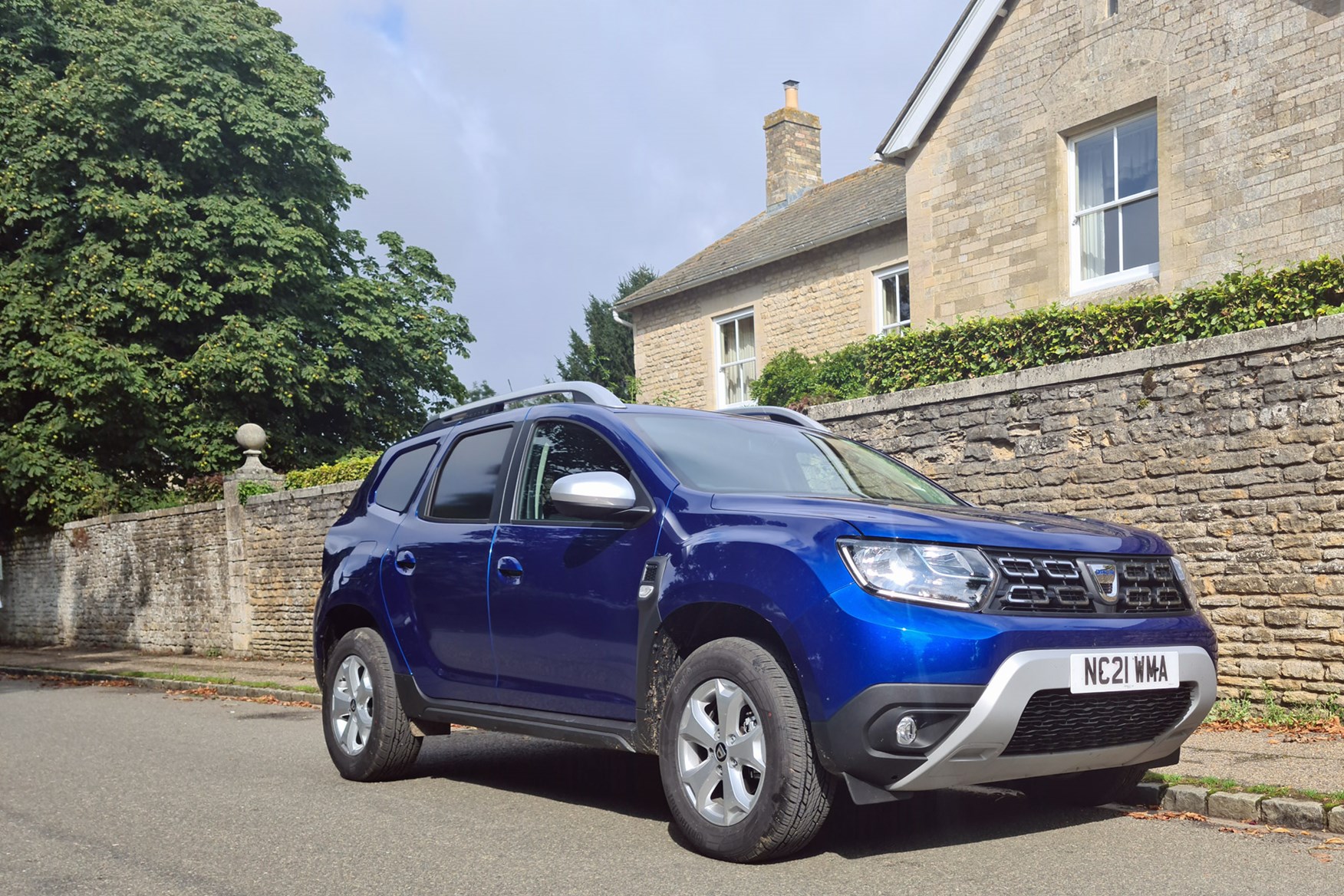
Following the introduction of this - and just to keep us all on our toes - Dacia then discontinued the middle-spec petrol. This leaves two petrol and one diesel engine as your options again for the latest facelift.
Dacia Duster Commercial engine specs and performance
The entry-level petrol is the 1.0-litre, three-cylinder TCe 90, which uses a turbocharger to hit a heady 90hp and 160Nm of torque; top speed is 103mph and 0-62mph takes 13.5 seconds. Not a good choice if you want to carry maximum payload.
The middle petrol option - now discontinued - is a turbocharged 1.3-litre four-cylinder model badged TCe 130. As you’ve probably guessed from the name, this has a much more attractive 130hp, which together with 240Nm is enough to reach 120mph and do 0-62mph in 10.6 seconds.
The most powerful petrol, available from October 2021, is the TCe 150 – a 150hp version of the same 1.3-litre turbo. This produces only a modest increase in torque (250Nm), but with the EDC gearbox it should prove very easy and relaxing to drive. And is faster, taking 9.7 seconds to do 0-62mph on the way to a 124mph top speed.
Meanwhile, the Blue dCi 115 turbodiesel has 115hp and 260Nm, and can hit 0-62mph in 10.3 seconds. Top speed is 113mph for the 4x2 version and 108mph for the 4x4 version.
All Dacia Duster Commercials except the 150hp petrol are fitted with a six-speed manual gearbox. Every standard model is front-wheel drive (FWD), with only the diesel also offered in four-wheel drive (4WD).
What is the Duster Commercial like to drive?
At this point, we’ve only driven the 4x4 diesel. Our main Duster SUV car review will give you an idea how the other engines are likely to perform in the commercial variant, but the other thing to pay attention to here is the rear suspension.
In order to make room for the rear differential, the Duster Commercial 4x4 gets a more sophisticated multi-link rear suspension design, helping it to feel more stable and controlled when cornering, and better able to deal with bumpy surfaces.
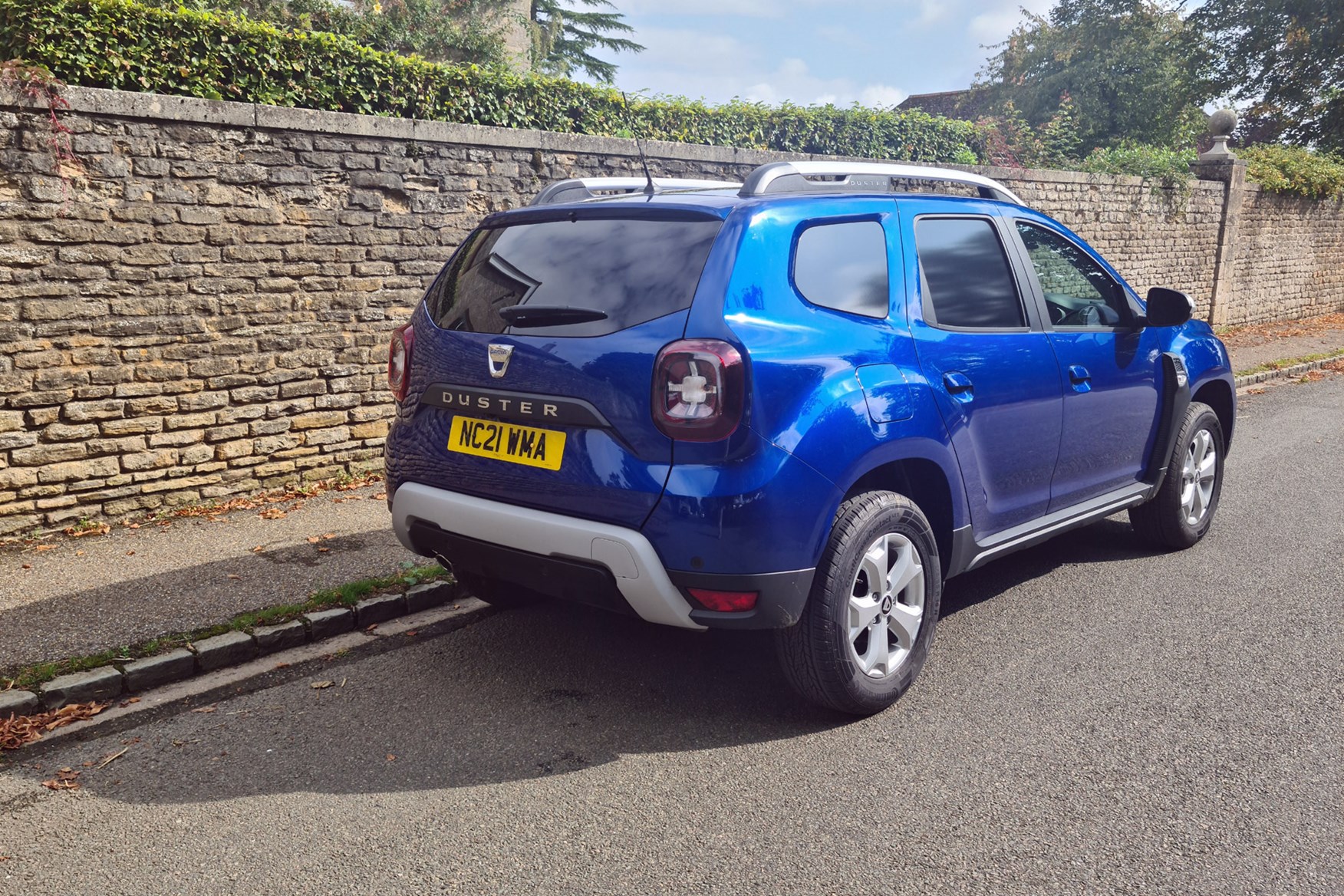
Add the perky eagerness of the most powerful engine in the range, and you’ve got quite the sprightly performer. It’s no rocketship, but it will give you the confidence to run rings round the average van on a country road, and offers much greater refinement than an ordinary light commercial vehicle.
We enjoyed driving it rather more than we expected to, even if the gearshift mechanism does feel a little flimsy. Shame the steering wheel is slightly offset rather than dead-ahead, too.
Is the Duster Commercial any good off-road?
It makes sense that the four-wheel drive diesel will be the prime choice if you’ve got tough off-roading in mind, as the ability to drive the rear axle as well as the front axle will improve traction when the going gets slippery.
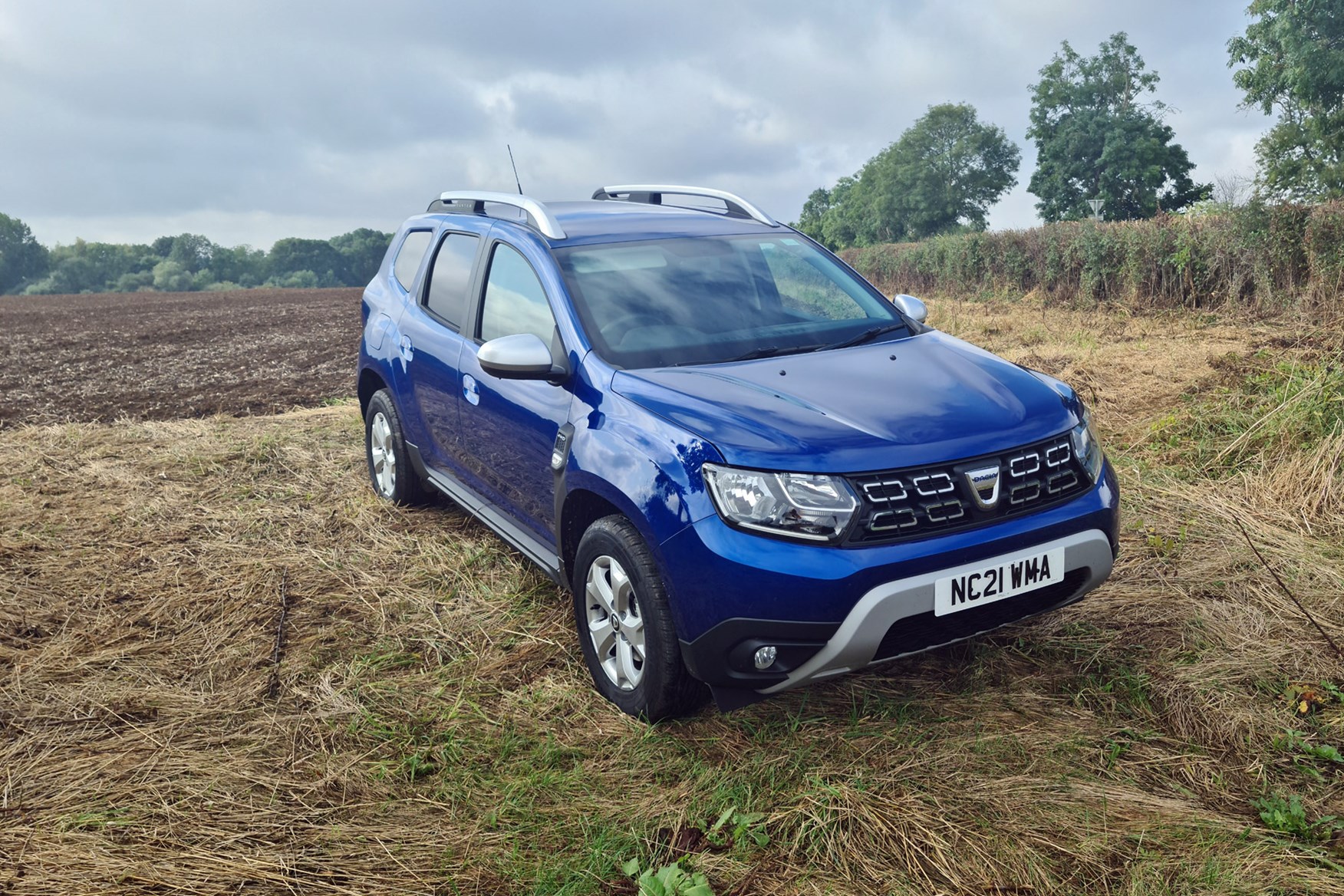
The 4x4 does have a slightly lower departure angle of 33 degrees instead of 34, thanks to the rear diff – though the extra capability this provides surely makes up for that, and ground clearance is mildly higher at 210mm versus 205mm for the 4x2 versions.
All models have a 30-degree approach angle and a 350mm wading depth.
- Car like comfort
- Budget-brand basic but well put together
- Load space well thought out – mostly
The first pleasant surprise upon opening the door of the Dacia Duster Commercial is that it doesn’t smell of industrial rubber – a problem that plagues many other commercial 4x4 conversions. It probably helps that the modifications from passenger car to LCV are carried out by Renault Tech rather than a third party. A fine reality that also explains the quality of the fixtures and fittings.
What’s the Duster Commercial like for driver and passenger?
Up front, the Commercial variant is unchanged from the passenger car. So you get a neat and unfussy design that’s solidly constructed but not from especially fancy plastics.

All of the controls are easy to find and understand – including the touchscreen infotainment system – and although not originally designed to commercial vehicle standards, it all feels robust and seems likely to withstand some abuse.
As we’ve already mentioned, it’s a shame the steering wheel isn’t straight in front of the driver. And compared to the best purpose-built vans, there isn’t a huge amount of storage in the cab area, though you do get a couple of cupholders and decent door bins.
What’s the load space conversion like?
Behind the front seats is a fixed metal bulkhead partition with a mesh upper section in an unusual honeycomb design. This allows you to still see out of the clear rear window, assuming you haven’t loaded anything in the way.
A load cover runs from front to back at this window line, comprising the original parcel shelf and some additional pieces. These can all be removed if needs be, a job that takes about five minutes, but will leave you needing to find somewhere to store them.
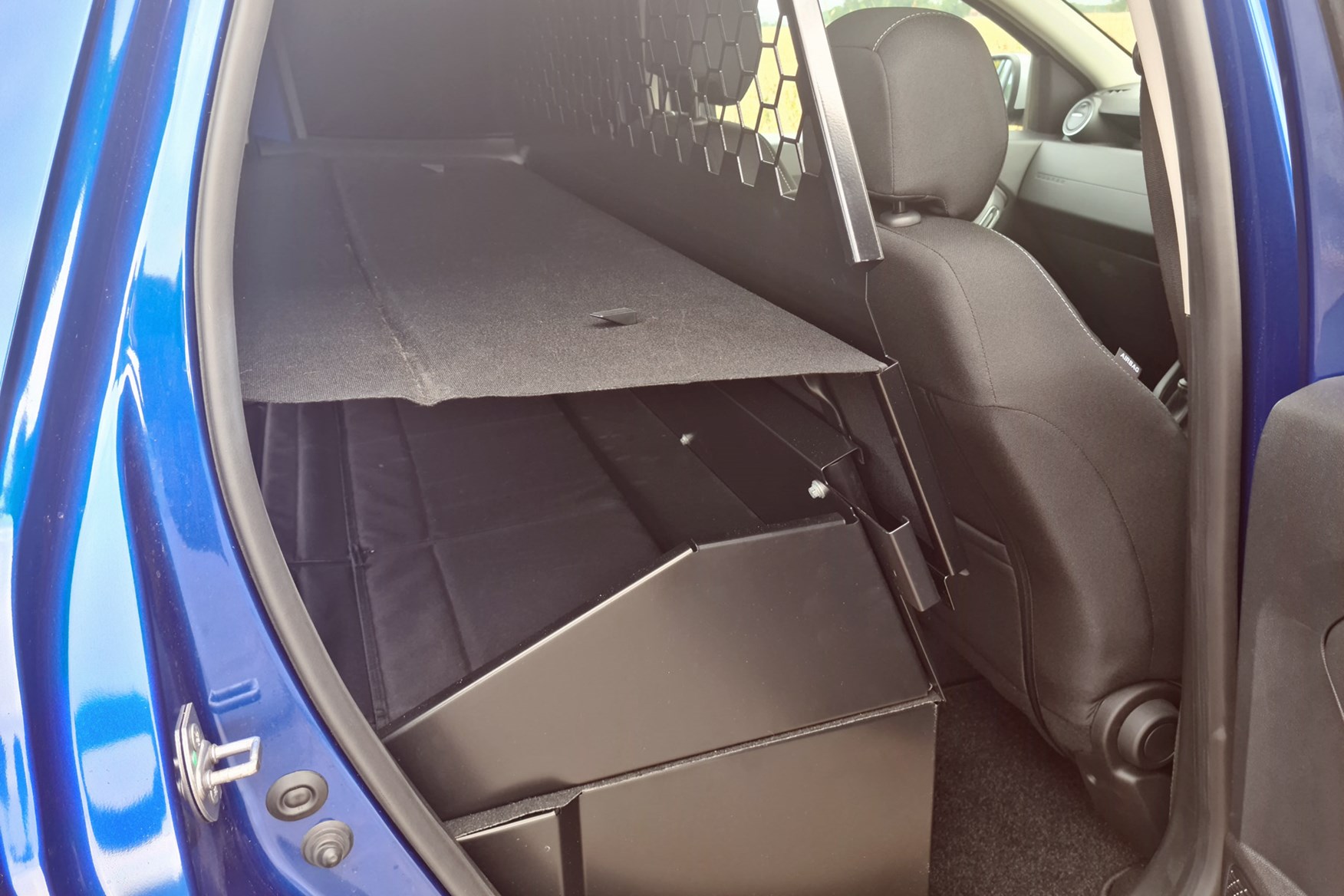
The fabric load-space liner is also removable.
What you can’t do anything about are the metal pieces that abut the load partition and partially block the side door access, making it all but impossible to slide items in under the load cover via the two former rear passenger doors. This seems an odd decision; even if it does save the door trims from battle damage, it’s not like it’s possible to convert these things back into a car. Rather pointless, and a little annoying.
Why consider a commercial 4x4 / car-derived van?
Aside from the pleasant driving experience and car-grade cabin, commercial 4x4s and car-derived vans benefit some owners in the way that they don’t immediately look like vans at all.
This can be good for image reasons – you may not want a ‘van’ parked on you drive – but can also help avoid opportunistic theft, as vehicles such as the Duster Commercial are less of an obvious target for tool thieves.
The flip side to that is more limited load space and lower payload ratings. The Duster is unlikely to be suitable for heavy-duty construction work, but might suit a travelling engineer or other trades that don’t depend on masses of load lugging capacity.
- Very cheap to buy
- Low running costs
- Standard equipment covers the basics
As of August 2022, the Duster Commercial is priced from £13,995 before VAT in entry-level 1.0-litre petrol form – far cheaper than any other commercial 4x4 and less than all the other car-derived vans available, even though these are based on much smaller vehicles.
As for the diesel 4x4 version, this is priced from a still reasonable £17,495 in Essential specification, rising to £18,795 in Expression spec (which replaces the previous Comfort model). A diesel 4x2 is also available in Expression trim; priced from £16,845, this costs less than the Essential diesel, but that's because the Essential is 4x4 only.
The 150hp petrol automatic, which is only available in the better equipped Comfort spec, is priced from £18,145.
All told, this is one of the bargains in the van world right now.
What’s more, as a commercial vehicle, the Duster attracts commercial vehicle tax rates – which are fixed-price and generally cheaper than for an equivalent car.
Dacia Duster Commercial mpg
The official WLTP fuel economy ratings for the Duster Commercial are 45.6mpg for the petrols, 57.6mpg for the 4x2 diesel and 53.3mpg for the 4x4 diesel.
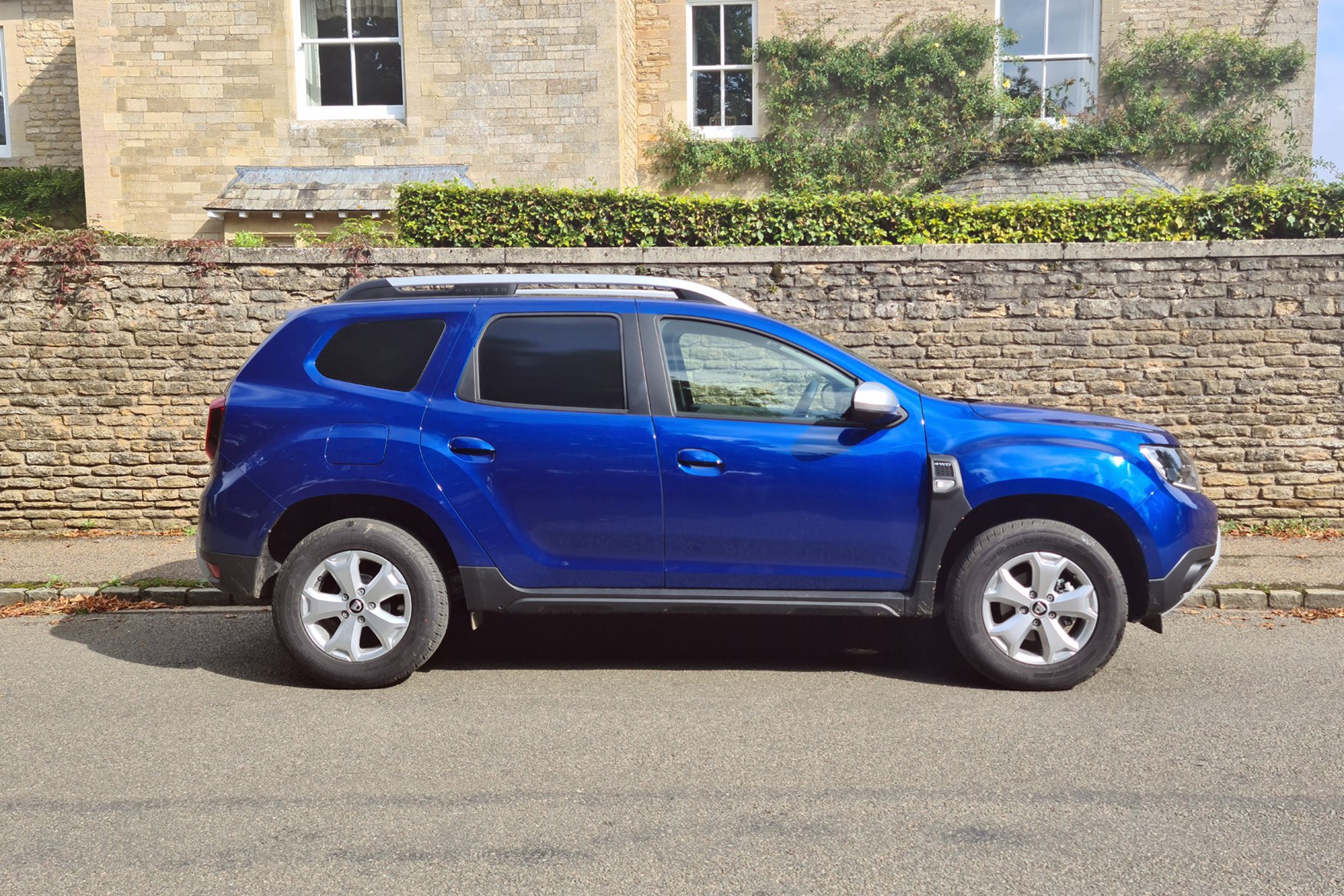
All versions of the Dacia Duster Commercial meet the latest Euro 6D Full emissions regulations.
Dacia Duster Commercial servicing and warranty info
The Commercial version shares warranty and servicing intervals with the passenger car.
This means the warranty is for three years / 60,000 miles (whichever comes sooner).
Service intervals are typically 18,000 miles or one year, but this varies slightly with engine type.
Dacia Duster Commercial standard equipment
The latest Duster Commercial comes in two trim levels: Essential and Expression.
Previously, the higher specification was labelled Comfort.
Dacia Duster Commercial Essential standard equipment highlights:
- Air-conditioning
- Front electric windows
- DAB radio with Bluetooth and USB connection
- Cruise control with speed limiter
- Height and reach steering wheel adjustment
- Height-adjustable driver’s seat
- 16-inch steel wheels
- Roof bars
Dacia Duster Commercial Comfort standard equipment highlights (in addition to Essential):
- 8.0-inch (7.0-inch on early models) touchscreen infotainment system with sat-nav
- Apple CarPlay and Android Auto
- Rear parking camera and sensors
- Lumbar adjustment for driver’s seat
- ‘Soft-feel’ steering wheel
- Front centre armrest
- Passenger vanity mirror
- Glovebox light
- Heated, electrically adjustable door mirrors
- Chrome trim inside and out
- Front foglights
- 16-inch alloy wheels
- Body-coloured door handles
There are just three options to choose from: a spare wheel (which doesn’t reduce cargo space), metallic paint and – for the Expression – European mapping for the satellite-navigation.
- We don’t expect major problems
Dacia typically does very well in owner satisfaction and reliability surveys, so we wouldn’t anticipate any major problems here. That’s one of the advantages of using proven technology instead of the very latest kit – most of the kinks have already been ironed out.
One proviso to this is that being based on a passenger car, the Duster Commercial might not be quite as robust as a purpose-built van when it comes to carrying maximum payload.
Own or drive a Dacia Duster Commercial? If you’ve had problems – or even just a particularly good experience – let us know via the Parkers feedback email address.
- You can definitely do better in this area
The Duster’s safety and security provisions are a little disappointing, even for a commercial vehicle.
For although you get four airbags and electronic stability control as standard, there’s no autonomous emergency braking, nor any other active driver aids. Only 4x4 models come with hill descent control.
Similarly, no commercial model is fitted as standard with an alarm.
Which Dacia Duster is best for me?
Even the entry-level Essential specification covers nice-to-have standard equipment such as air-con, so whether the upgrade to Comfort or Expression trim is worth the extra outlay perhaps comes down to how much you value a touchscreen infotainment system with smart-phone connectivity. Pricing is extremely keen in either case.
Engine-wise, we’d avoid the most basic petrol – it’s just not gutsy enough for a commercial vehicle – but either of the other petrol options should be pleasant enough, with reasonable running costs around town.
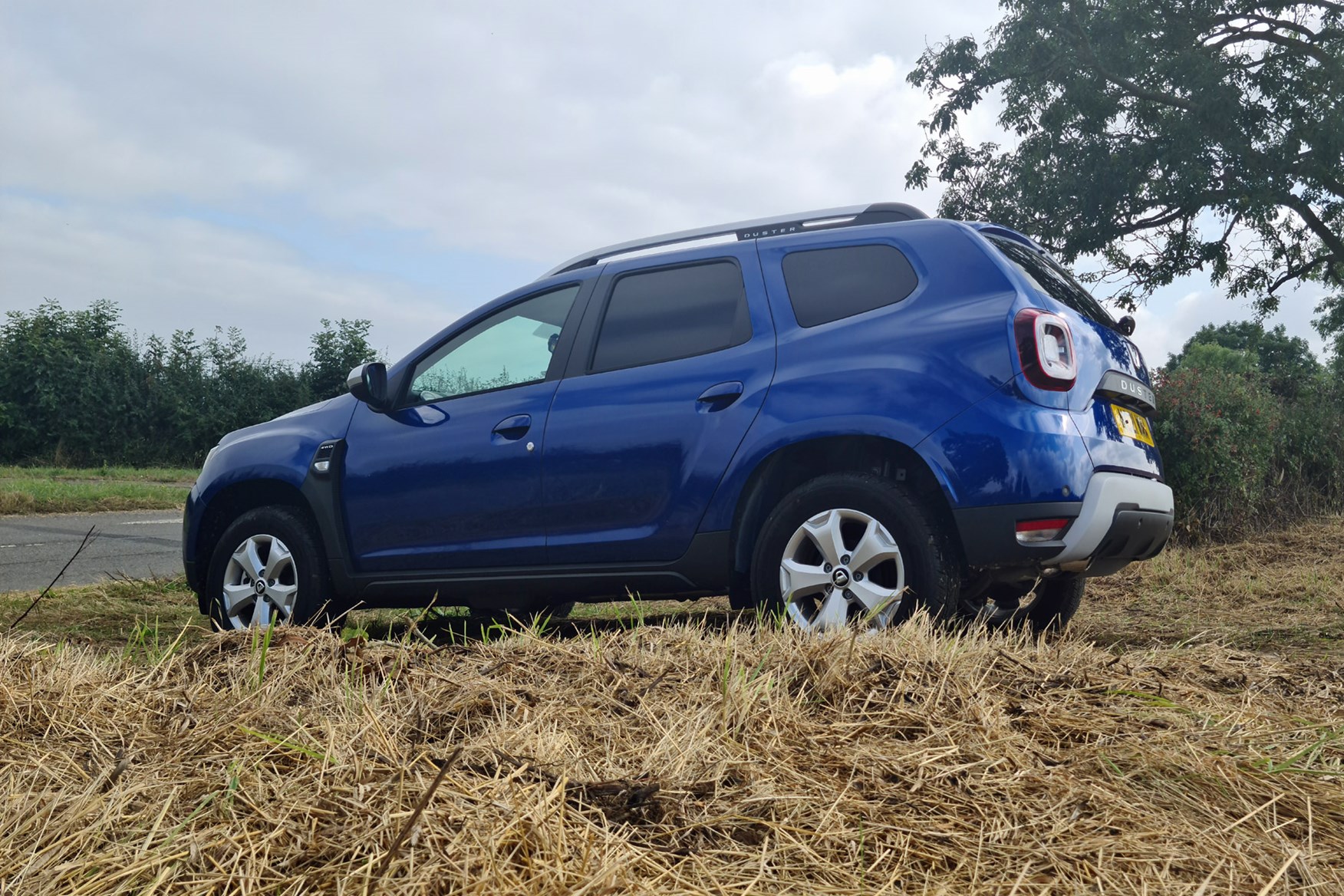
If you regularly do longer journeys, the diesel models are still worth seriously considering for their better fuel economy.
The 4x4 system and the automatic transmission are both proven, effective pieces of technology – you’ll know if they’re essential for the way you intend to use the vehicle. If they’re not essential in this way we wouldn’t be worried about spending the extra money on either of them. The standard front-wheel drive, manual gearbox versions of the Duster are just fine.
Also read:
>> Our Dacia Duster Commercial dimensions page



